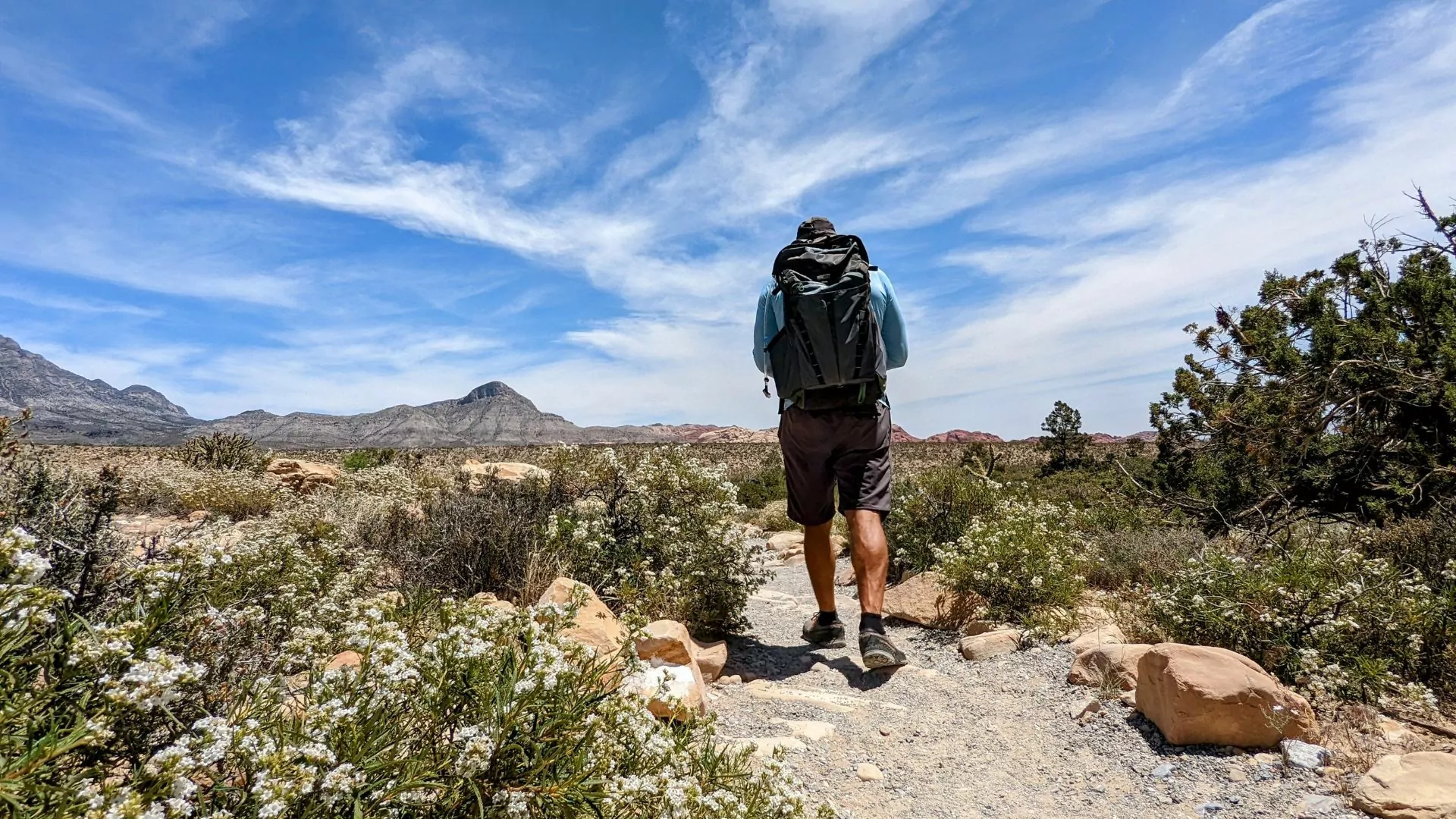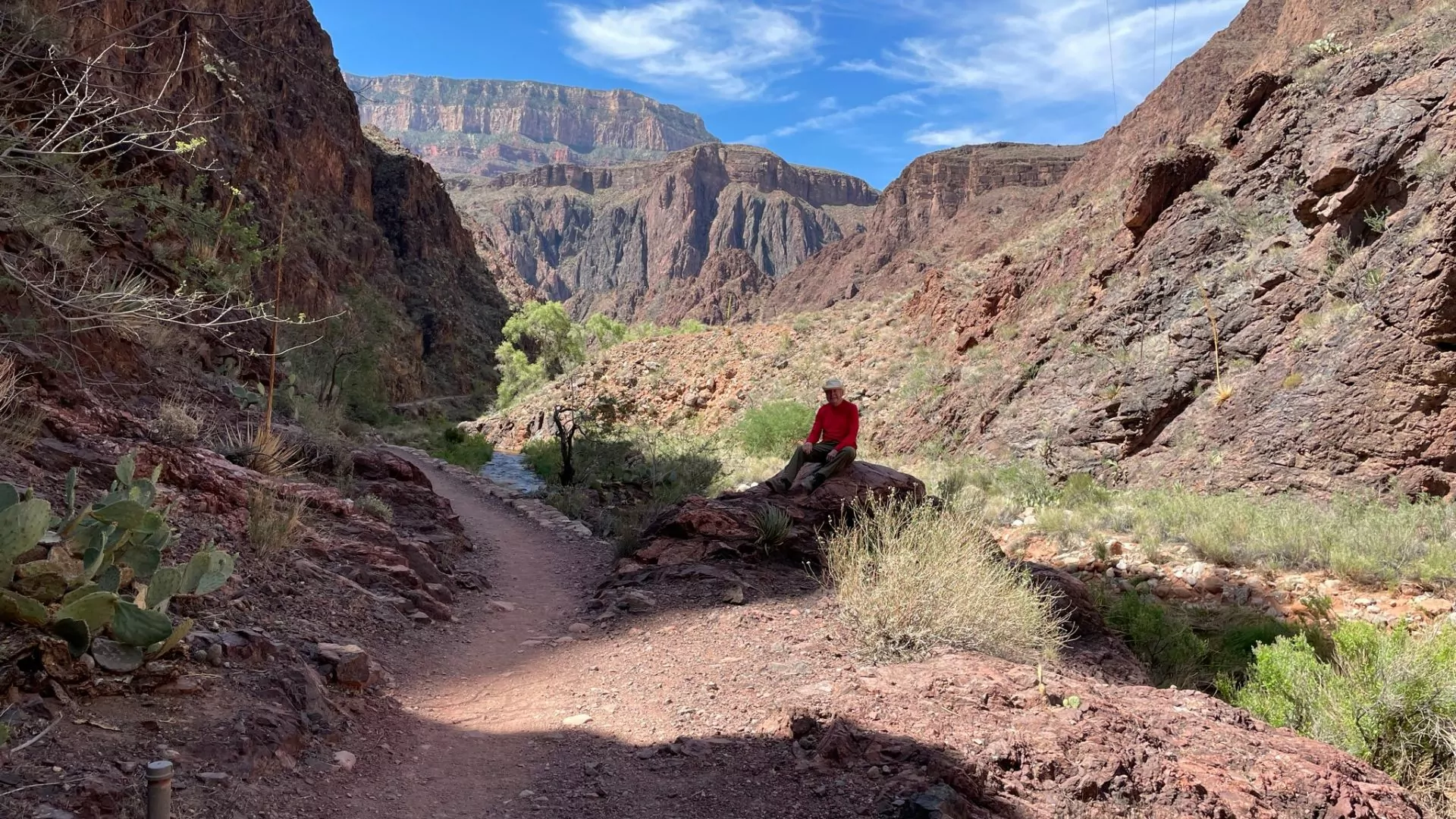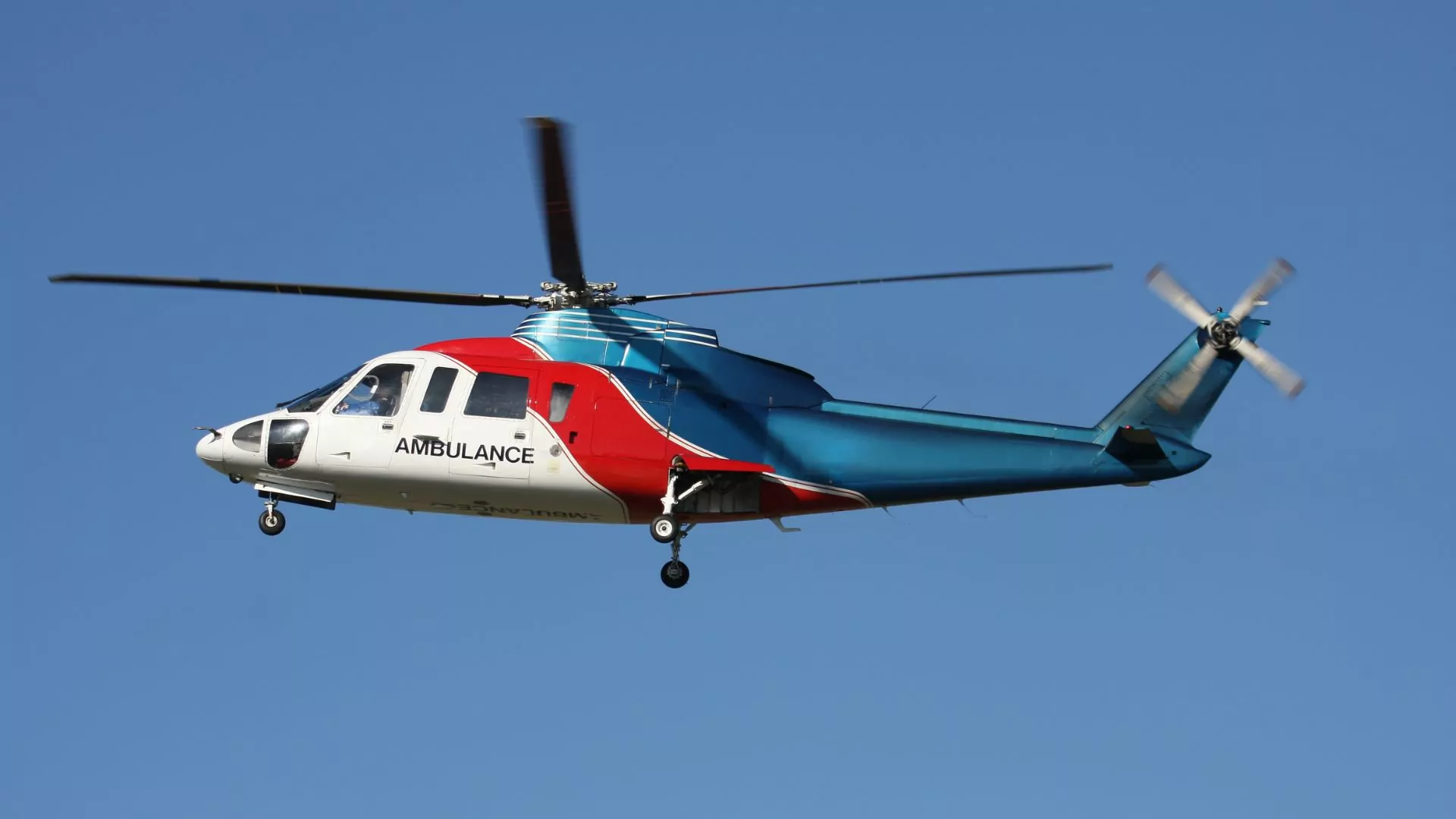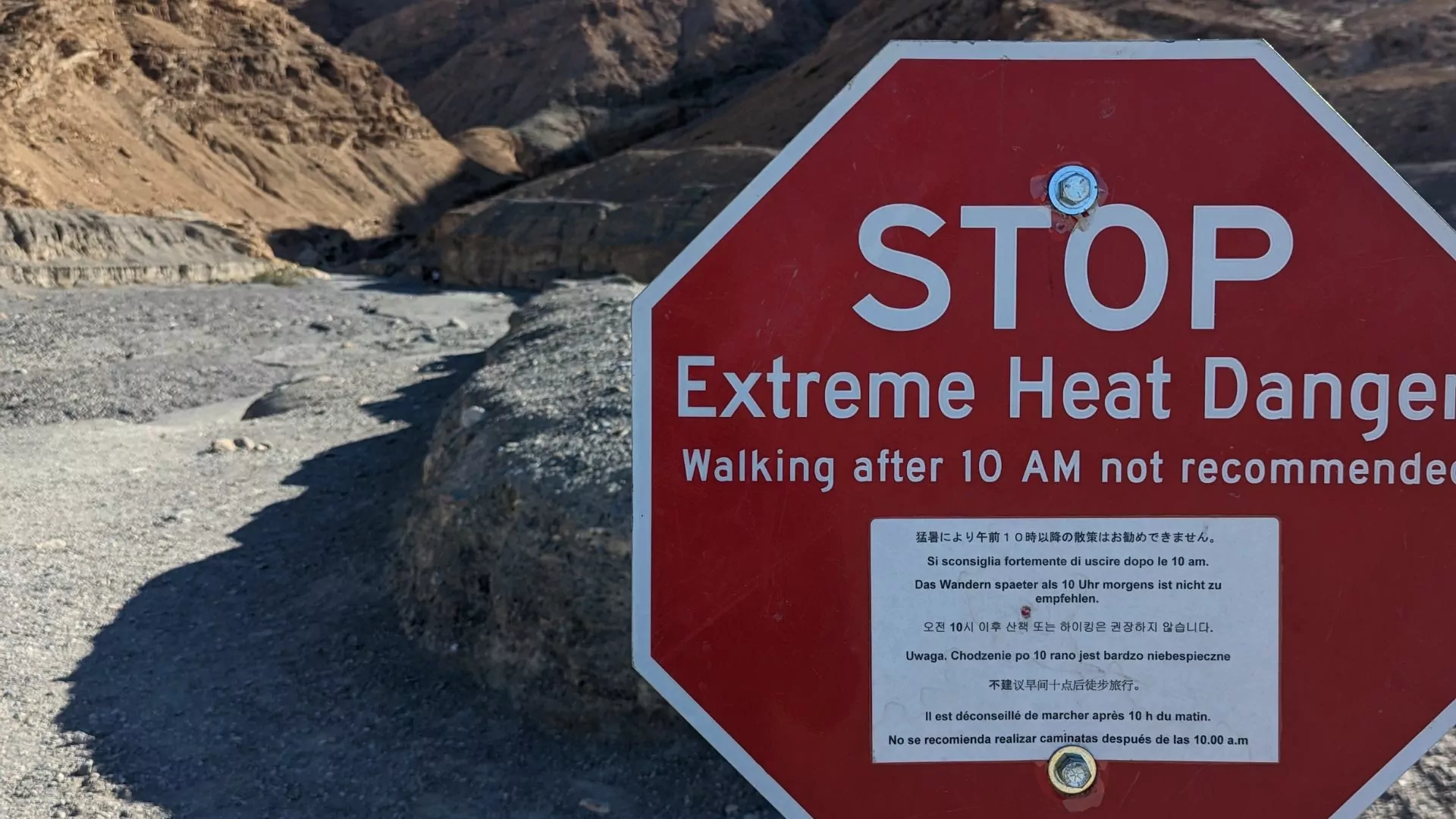Heat Illness symptoms, prevention and treatment
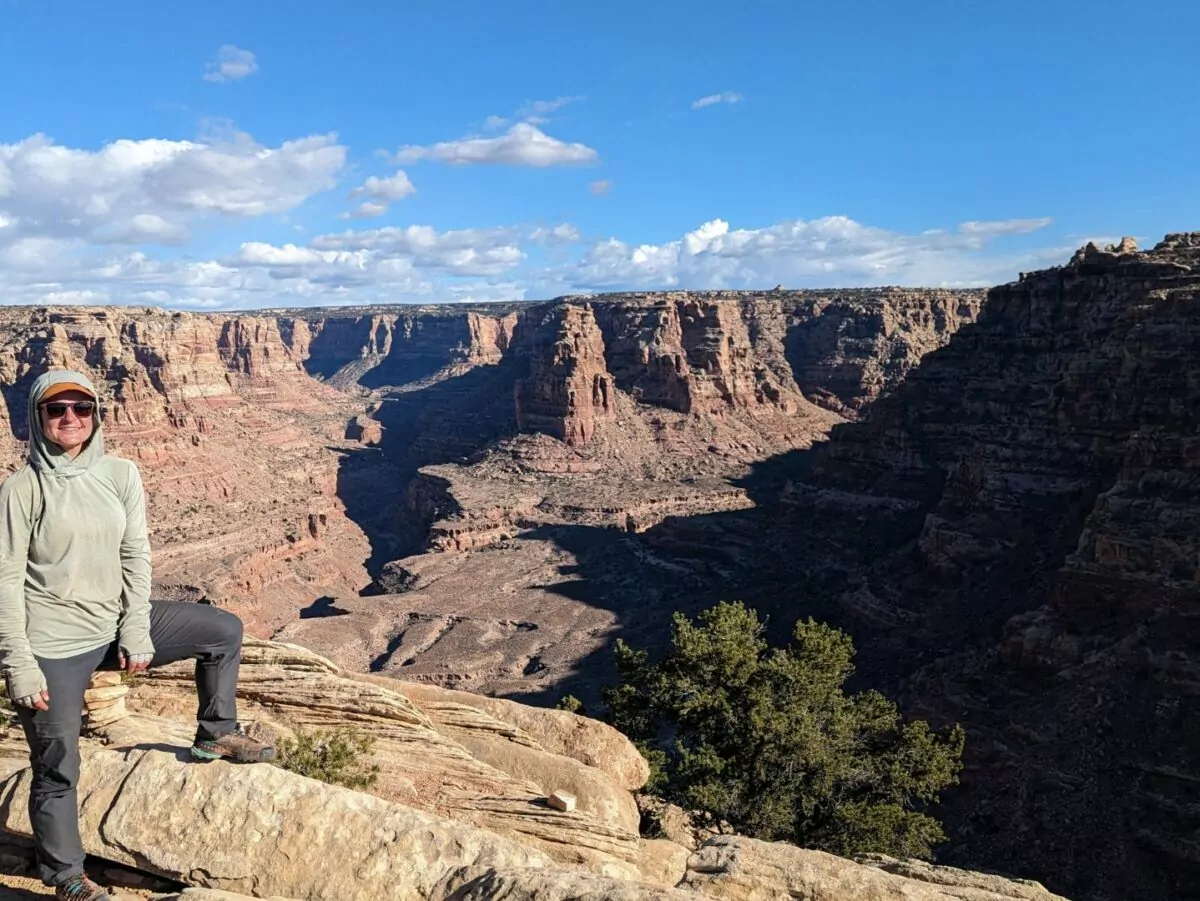
The gurgling sound my hydration bladder let out when I tried to sip its last remnants was a concerning sign. We were in the middle of the Grand Canyon, on a personal trip on the trail to Clear Creek with 3 miles to go before we could get access to a creek. Despite being a Phoenix native, frequent Grand Canyon backpacker, and future hiking guide, I had underestimated the heat of the desert and the scarcity of water as many hikers do.
Our saving grace was that we had hiked all day and the sun was starting to set behind the canyon wall, providing much needed shelter from its rays. We were lucky that the mistakes we made on the first day of the hike–an over ambitious itinerary, hiking in the heat of the day, and not bringing extra water–did not prevent us from reaching Clear Creek Canyon where cold refreshing water awaited. Our story had a happy ending with many lessons learned, but many careless hikers’ trips end in rescue, injury, or even death in the desert.
Summer temperatures, sun exposure and lack of water pose serious threats and can lead to a variety of heat illness symptoms. Properly preparing for hot weather hikes, and being able to recognize and treat the signs and symptoms of heat illness when they occur, can help you and your group to stay safe outside in the summer.
A study cited by Scientific American finds that, “Between 2004 and 2009, when the [Grand Canyon] park had more than 4.3 million visitors each year, there were roughly 77 heat illnesses during the annual six-month peak season from April through September.” With recent higher temperatures in the Canyon and a rise in annual visitors, this number has only increased. This summer, the temperature in the inner canyon reached 110 degrees Fahrenheit and may have been as high as 130 degrees Fahrenheit near the tall, black metamorphic rock walls that create the oven-like atmosphere there.
What is a Heat Illness?
Understanding what a heat illness is, the signs and symptoms to look for, and how to prevent or treat them, will keep you safe. Cleveland Clinic states that “a heat illness is caused by high temperatures and humidity. You may get an illness while exercising or working in high heat and humidity. Heat illnesses and heat illness symptoms range from mild to severe, and heat stroke can be deadly.” These illnesses can be broken down into three main categories; heat cramps, heat exhaustion, and heat stroke.
HEAT CRAMPS
Heat cramps present as painful muscle spasms and usually occur in a hot environment. When you sweat, your body can lose vital nutrients (electrolytes) and salts which causes your muscles to tighten. Heat cramps are considered a mild heat illness but left untreated they can also be an early sign of heat exhaustion.
Signs and Symptoms of Heat Cramps
Early signs of heat cramps include profuse sweating, and skin that is red or hot to the touch. This may progress to involuntary spasms of large muscles. The most common muscles affected are those found in the legs, arms, and abdominal region. When observed, urine may be darker yellow and have a strong smell.
Remember: Heat illness symptoms may be hard to detect in their early stages so prevention is key! Don’t be afraid to ask your friends about things like water intake and urination to ensure early detection of increasing dehydration or better yet prevent it altogether.
Treatment of Heat Cramps
Since heat cramps may be a sign of a more serious heat illness, it is important to treat them right away. The subject should rest in a cool place or in the shade, cool their bodies using water, hydrate, and gently stretch the cramping muscles. Sipping on a sports drink, water with electrolytes, or eating salty snacks can help. The person should avoid excessive exercise energy or returning to the heat if possible. People that sweat profusely (therefore losing more electrolytes) or are unused to hot environments are more likely to get heat cramps.
HEAT EXHAUSTION
Heat exhaustion is when your body gets too hot and can’t cool itself down. Heat exhaustion can range from mild to severe and can also be an early sign of heat stroke. It can be caused from exercising or working outside when it’s hot or humid.
Signs and Symptoms of Heat Exhaustion
To detect heat exhaustion, watch for sweating, rapid pulse, dizziness, nausea and fatigued. Heat cramps are a sign of heat exhaustion and may also be accompanied by pale, cool, and clammy skin.
Remember: Heat illness symptoms may be hard to detect and can escalate quickly to become more serious. The safest approach includes planning your exertion for cooler locations (think high elevation) or cooler times of day (early morning) in hot weather.
Treatment of Heat Exhaustion
While heat exhaustion may not be immediately life threatening, if the body is not cooled down when these symptoms are observed, heat exhaustion may lead to heat stroke, requiring immediate evacuation. Some ways to treat heat exhaustion are to stop the strenuous activity and rest. Seek out the shade. Submerge the patient in cool water if possible, or apply wet clothes to cool down faster. Sip on a sports drink with electrolytes.
If the body isn’t cooling down, symptoms worsen, or the patient becomes confused, seek immediate definitive medical attention.
HEAT STROKE
Heat stroke is the most serious kind of heat illness and can be life threatening. Heat stroke occurs when your body is no longer able to control its own temperature. The body’s temperature rises rapidly and the usual systems it uses to cool down, like sweating, are no longer effective. Heat stroke can take place when the body rises above 104 degree Fahrenheit and can injure important organs, create long term complications, and lead to death.
Signs and Symptoms of Heat Stroke
Signs of heat stroke to be alert for include high body temperature, rapid breathing, and racing heart. Altered mental status or loss of consciousness is also possible. The person may be profusely sweating or have hot, dry skin.
Treatment of Heat Stroke
Action must be taken immediately if someone displays the heat illness symptoms for stroke. Minutes can decide life or death. Immediately begin trying to cool the person down by any or all of the rapid means available to you and contact emergency services. Someone experiencing heat stroke requires immediate evacuation to definitive care. While waiting for help, try to keep the person conscious. If they lose consciousness and then lose a pulse, begin CPR.
Prevention
Heat illness can escalate quickly into an emergency but hikers can be proactive and prepare in different ways to prevent them. If this seems out of your realm of ability, consider foreogoing outdoor exercise in hot weather or booking a hiking trip with a professional guide. Companies like Wildland Trekking require their guides to be Wilderness First Responder (WFR) certified so as to be able to identify, treat, or evacuate anyone requiring medical attention in the backcountry. They also provide satellite communication devices and support resources to call for help.
Research
One way to prevent heat illness is by researching where you will be hiking, the environmental hazards of that place, the predicted temperature, and how you might plan to mitigate those risks. If you want to hike in the desert in the summer, consider hiking in the early morning/late evening and staying close to water sources. Know how much water and snacks you need to bring, and have an emergency plan.
Gear and Clothing
Some of my favorite gear to keep me protected in the summer heat are sun hats, sun glasses, a long sleeved light-weight cotton shirt, sunscreen, and a buff that I wet and put on my neck. I always carry at least three liters of water on me; usually in the form of one hydration bladder and one hard water bottle (in case one of them breaks)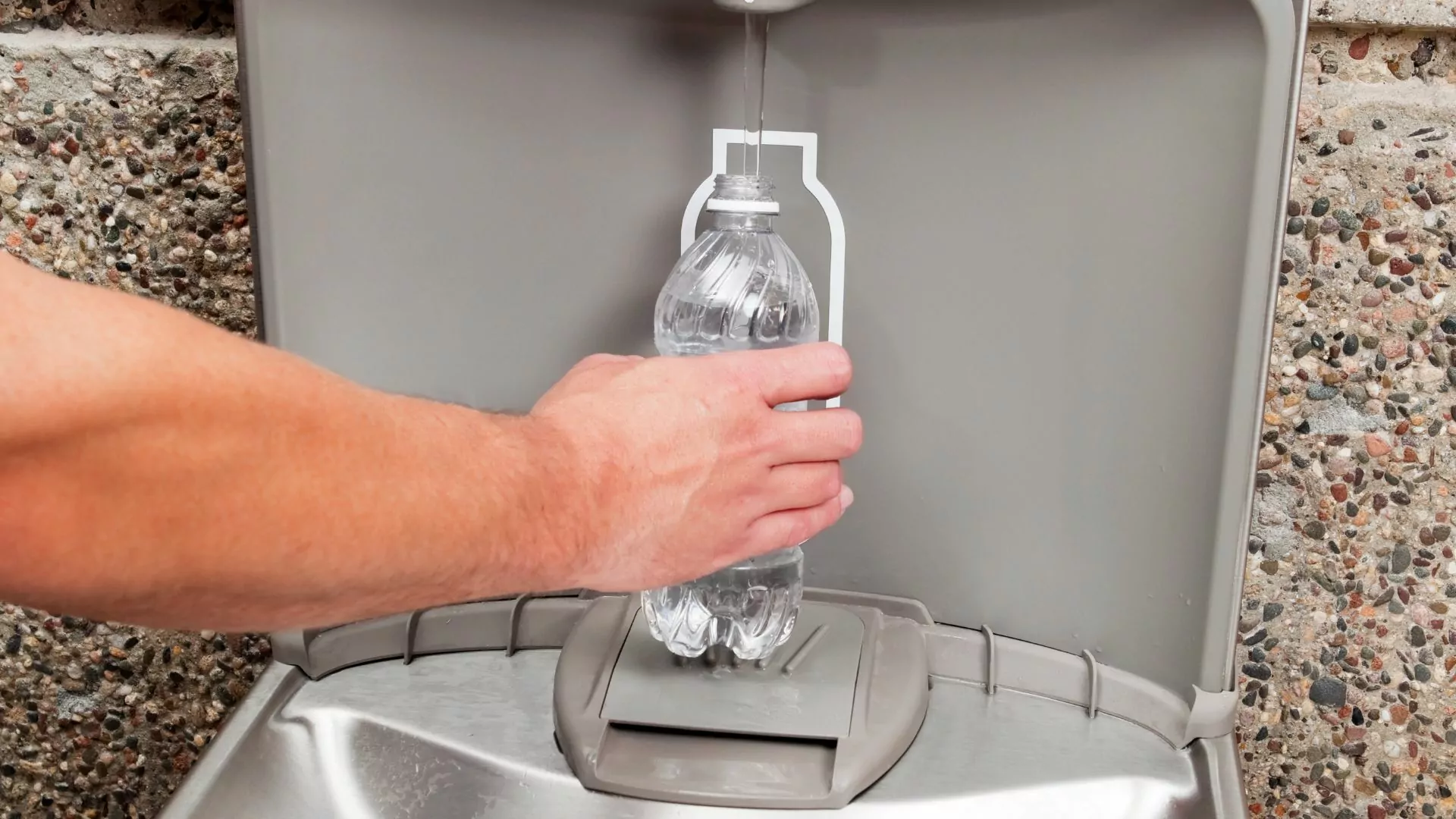
Food
When I know heat illness is a danger, I bring plenty of electrolytes to put in my water or some kind of sports drink. I’m also a fan of salty snacks that are easy to eat like salted peanuts. Salt cubes or energy gummies can help give your body energy on your hike.
Training
A majority of the accidents that occur in hot desert climates happen because someone underestimated how strenuous and hot the trail would be. Knowing your ability level and how you handle the heat are vital to staying safe. Taking a first aid/CPR or wilderness medical training can build the medical skills needed.
Grand Canyon Rim to Rim Backpack
Heat illnesses are a serious concern when hiking in hot places like the Southwest. Knowing how to identify and address heat illness symptoms–or better yet, prevent–heat illness, will help keep you and your group safe.
Rather hike with an experienced outdoor guide? Book a guided trip with Wildland Trekking!



